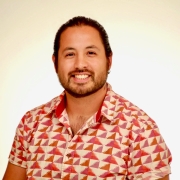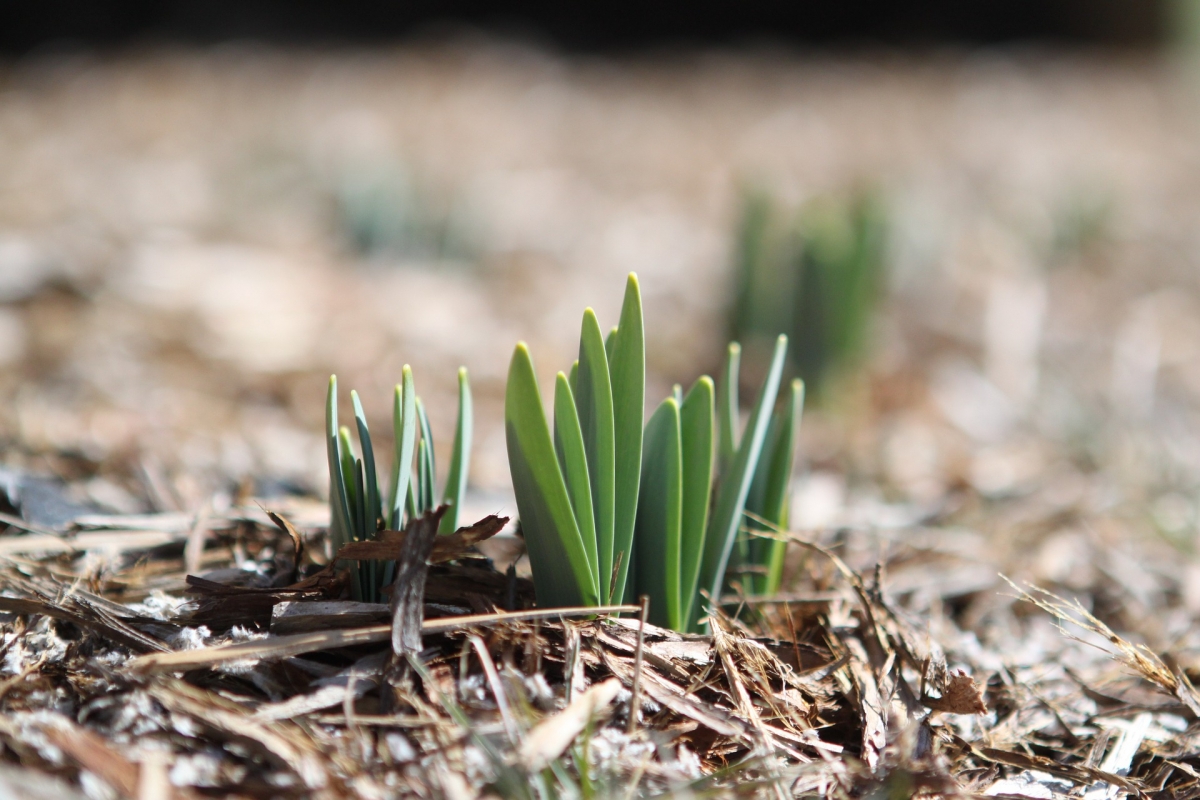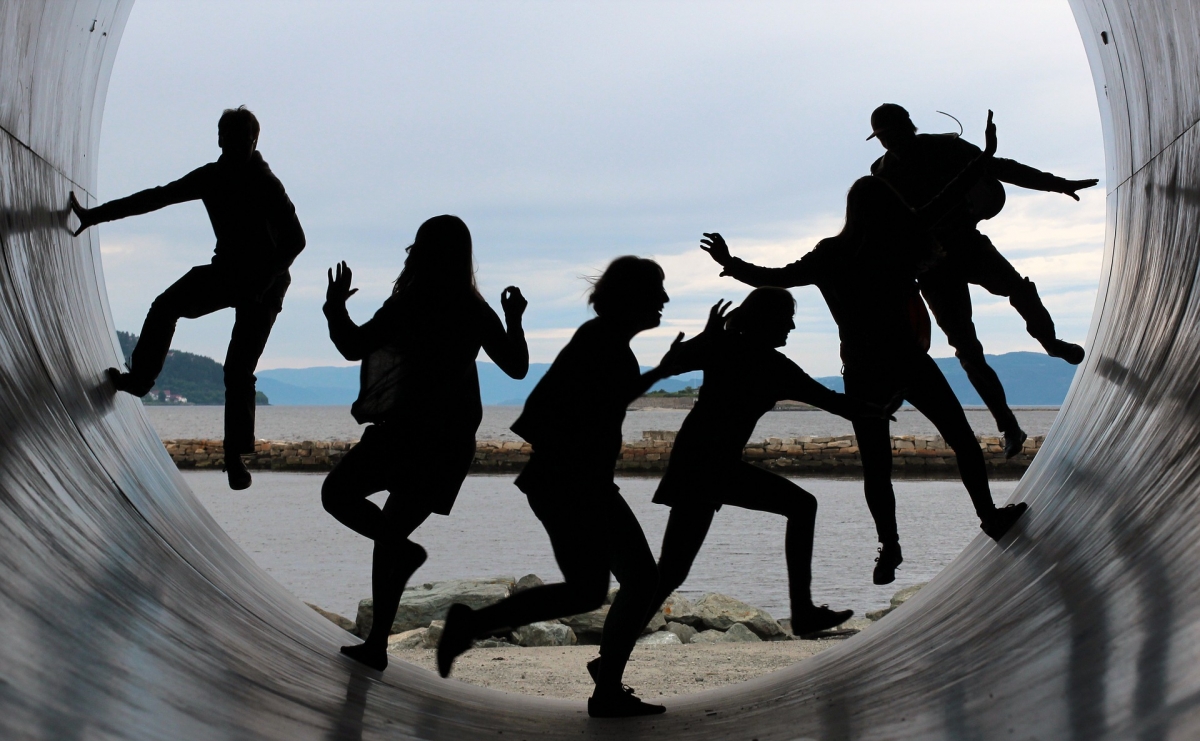Video Description: In this session we play with the movement patterns of spirals, cycles, infinity loops to connect to the month of Elul during which we begin the period of Teshuvah, aka “repentance”, which also translates to a sense of “turning” or “returning” into ourselves. Movement-wise, we’re learning a fluid motion called the Figure Eight that allows us to get to the ground and back up by utilizing more cyclical and soft movement patterns rather than exclusively linear and muscular-strength-based movements as we often rely on.
Part One: Begin in a seated position, legs straight forward (they do not need to be locked out). Starting on the right side, bring your right knee up so that your leg is bent in a triangle shape to your right side. Bring your chest over your right knee, then transition to the ground by tracing through the pisiform (the small rounded carpal bone situated where the palm of the hand meets the outer edge of the wrist) through to the elbow, to the shoulder, and ultimately to laying on your back. The idea is to create a “curved line” (aka a wheel) through these points so that you’re fluidly moving to the ground. Reverse back up on the same side — back to shoulder to elbow to pisiform, bringing the chest back over the knee, using the arms as needed to then push yourself back up into the original seated position. Practice multiple times on this side, then move to the other side as well.
Part Two: Connect each of the two sides so that instead of moving back up on the same side you went down on, you’re continuing the fluid motion from one side through to the other and coming back up the opposite side. Practice going each direction.
Part Three: Now we go from standing to sitting. Start standing tall and bring yourself into a squatting position (see below for modification). Once squatting, twist and pivot around towards the right and reach back with your right hand. Stretch the right hand back and lightly “sweep” the right hand directly back while straightening your legs so that you ultimately come to a seated position with legs straight in front of you. Come back up the same side by bringing your hand forward and “pushing” up and forward, coming up and driving your knees forward and over your feet, and back up into the squat, then stand.
Part Four: Similar to before, connect both sides so that you’re starting on one side and coming back up the other. In the middle, you’ll pause for a beat in the seated position, then initiate coming up be shifting your weight from eg the right butt-cheek into the left, and then up. Practice going each way trying to smooth each out.
Modifications for parts three and four: if you don’t have a low squat, then bend over as needed and use both hands to “walk” yourself back into the seated position. Over time this may smooth out and also help develop more range of motion through these positions.
Part Five: Now we connect both of these movements patterns together into the Figure-8. Starting in a standing position, move into the squat as before and back into the seated position. Instead of coming back up though, move to the opposite side and into the first pattern from sitting to laying down and back up. Then close the loop by coming back up the other side into the squat, and stand. Notice when to be shifting to which side — so e.g. start by twisting from the squat towards the right, bring the “line” of movement direction across the body while seated to the left and move through the left side to laying down, back up on the right, and then cross over again to come back up through the left side to the squat. This makes the Figure-8 pattern.
Part Six: Improv! Set a timer for 40-60 second intervals. Aim for at least three rounds of improv, though you can certainly do more. This is your opportunity to play with the patterns we’ve been practicing, find moments of surprise or recognition of being in other patterns. If you’ve watched the practice on organic strength, integrate some of those strength patterns as well. And in general, this is a good time to integrate other movement practices that you’ve done and find where they can fluidly come into play.
 Yoshi Silverstein is Founder & Executive Director of Mitsui Collective, a new startup building resilient community through embodied Jewish practice and multiracial justice. Previously, Yoshi was Director of the JOFEE Fellowship at Hazon. Yoshi has spent much of the past decade developing his work in movement, experience design, and embodied practice through learning with Ido Portal, ApeCo Movement School, and Movement Brooklyn; and as a coach at Bushwick CrossFit in Brooklyn. He is a 2nd degree blackbelt in Lotus Kajukenbo, an avid telemark skier and former alpine ski racer, and nature enthusiast with a masters degree in landscape architecture from the University of Maryland. As a Chinese-Ashkenazi-American Jew, Yoshi is an active leader, advocate, and educator in the Jews of Color community. He lives in the Cleveland, OH, area with his wife, daughter, and pup.
Yoshi Silverstein is Founder & Executive Director of Mitsui Collective, a new startup building resilient community through embodied Jewish practice and multiracial justice. Previously, Yoshi was Director of the JOFEE Fellowship at Hazon. Yoshi has spent much of the past decade developing his work in movement, experience design, and embodied practice through learning with Ido Portal, ApeCo Movement School, and Movement Brooklyn; and as a coach at Bushwick CrossFit in Brooklyn. He is a 2nd degree blackbelt in Lotus Kajukenbo, an avid telemark skier and former alpine ski racer, and nature enthusiast with a masters degree in landscape architecture from the University of Maryland. As a Chinese-Ashkenazi-American Jew, Yoshi is an active leader, advocate, and educator in the Jews of Color community. He lives in the Cleveland, OH, area with his wife, daughter, and pup.











